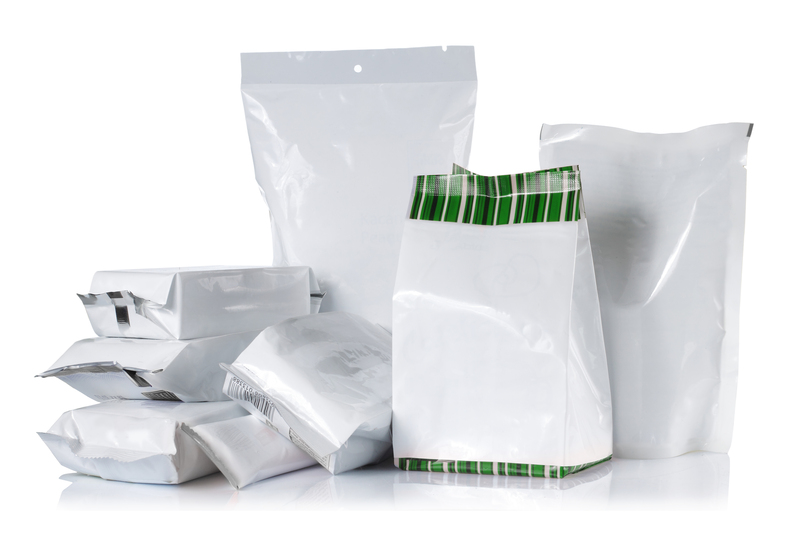Safeguarding the Planet With Responsible PPE Waste Disposal
Introduction: The Urgency of PPE Waste Management
The COVID-19 pandemic brought an unprecedented surge in the use of personal protective equipment (PPE). From disposable masks and gloves to face shields and gowns, PPE became central to public health and safety worldwide. However, this surge has also led to a critical challenge: how to properly manage PPE waste and prevent further harm to our environment. Responsible PPE waste disposal is now a vital topic for individuals, businesses, and governments across the globe.
In this comprehensive guide, we'll explore why managing PPE waste responsibly is essential, the environmental hazards of improper PPE disposal, effective waste strategies, and innovative solutions making a difference today. With the right knowledge and actions, we can safeguard our planet and combat pollution, one mask at a time.

Why Responsible PPE Waste Disposal Matters
Rising Environmental Concerns
According to recent estimates, billions of disposable masks and gloves are used and discarded every month around the world. The vast majority of these items end up in landfills, incinerators, or, worse, in our natural environments--oceans, rivers, and landscapes. Delicate ecosystems and wildlife are under immediate threat from the plastics and chemicals found in single-use PPE.
- Non-biodegradable Materials: Most standard PPE items such as surgical masks, nitrile gloves, and disposable gowns are made from plastics like polypropylene and polyethylene.
- Wildlife Hazards: Animals often mistake PPE litter for food, leading to ingestion, choking, or entanglement.
- Microplastics Pollution: Improperly disposed PPE eventually breaks down into microplastics, contaminating soil, water, and food chains.
Protecting the earth from these impacts requires intentional and eco-friendly PPE waste management practices at every level.
Health and Hygiene Risks
PPE waste can also act as a vector for disease transmission. Discarded masks and gloves may be contaminated with bacteria or viruses, exposing sanitation workers, community members, and even wildlife to potential health risks. Ensuring that PPE is disposed of in a responsible manner helps lower the risk of disease outbreaks and protects public health.
Best Practices for PPE Waste Disposal
Segregation: Keep PPE Waste Separate
Proper segregation of PPE waste from regular household or workplace trash is the first step toward responsible disposal.
- Use clearly labeled containers for PPE waste in offices, hospitals, schools, and public areas.
- Never mix PPE waste with recyclable materials, as this can compromise the recycling process and create contamination.
Disposal Methods: Choosing the Right Approach
There are several ways to dispose of PPE safely and responsibly. The right method depends on the type of PPE and local waste management regulations. Here are some of the most common PPE disposal solutions:
- Incineration: Many healthcare facilities use high-temperature incineration to destroy contaminated PPE. While this method is effective at killing pathogens, it must be managed carefully to minimize air pollution.
- Landfilling: Placing PPE waste in designated landfill sites is a common method. It's crucial to use secure, sanitary landfills to prevent leaching of chemicals into soil and groundwater.
- Specialized PPE Recycling: Some companies are now offering recycling programs for certain types of PPE, particularly masks and gloves made from specific plastics.
- Waste-to-Energy: Advanced facilities can convert PPE waste into energy through controlled combustion, reducing overall waste volume.
Individual Actions To Reduce PPE Waste Impact
- Limit single-use PPE: Whenever possible, choose reusable options, such as washable fabric masks or gloves.
- Follow local guidelines: Always check local regulations for the recommended way to dispose of PPE, particularly if it is potentially infectious.
- Never litter PPE: Littering masks or gloves in public places not only harms the environment but also endangers others.
- Participate in recycling programs: Seek out drop-off points or mail-in programs for used PPE, if available in your area.
Understanding PPE Recycling: Opportunities and Challenges
Can PPE Be Recycled?
Traditionally, most single-use PPE has not been recyclable due to contamination concerns and mixed plastic compositions. However, innovations in waste management have led to new techniques for recycling certain PPE items, especially after thorough cleaning and disinfection.
Some forward-thinking companies are developing processes that:
- Collect, sanitize, and shred used PPE for conversion into plastic pellets.
- Create new products such as park benches, construction materials, or even new packaging from recycled PPE.
Nevertheless, PPE recycling remains a challenge due to the vast quantities involved, collection logistics, and concerns about contamination.
Innovative PPE Recycling Initiatives
- Terracycle: This global leader in recycling has launched a PPE Zero Waste Box program, allowing individuals, schools, and organizations to send in PPE for specialized recycling.
- Local Government Programs: Several municipalities have established PPE collection points at hospitals, community centers, or pharmacies.
- Corporate Partnerships: Major industries, particularly in healthcare, are setting up take-back schemes to manage their own PPE waste more sustainably.
The Environmental Impact of Improper PPE Waste Disposal
Marine Life in Peril
Discarded face masks and gloves are increasingly being found in rivers, oceans, and beaches, posing a critical threat to marine life. Sea turtles, birds, and fish can become entangled or ingest plastic debris, leading to injury or death.
A study published in 2022 estimated that over 1.5 billion masks could have entered the ocean in 2020 alone.
Microplastics and Human Health
With time, PPE waste degrades into microplastics--tiny plastic particles less than 5mm in size. These are detected in oceans, drinking water, soil, and even the air we breathe. Microplastics are linked to a variety of health concerns, including possible toxic effects and disruption of endocrine systems in both wildlife and humans.
Global Regulations and Guidelines for PPE Waste
World Health Organization (WHO) Recommendations
- Segregate PPE waste at the point of generation and store it in sealed containers.
- Favor reusable PPE whenever feasible, ensuring thorough disinfection between uses.
- Promote the development and use of compostable or biodegradable PPE to ease the disposal burden.
National and Local Policies
Many countries have adapted their waste management frameworks to address the increase in PPE use.
- United Kingdom: Guidance for segregating PPE waste in healthcare, quarantine, and community settings.
- United States: CDC advising procedural disposal of PPE and encouraging non-healthcare PPE waste to go into household trash instead of recycling.
- India: Rigorous rules under the Bio-Medical Waste Management Regulations (2016, amended 2020), including color-coded disposal bags for COVID-19 waste.
Corporate and Institutional Responsibilities
The Role of Businesses and Institutions
Workplaces, hospitals, schools, and event venues are major generators of PPE waste. They must take proactive steps to ensure responsible PPE disposal:
- Maintain dedicated bins for PPE waste and train staff or students on proper use.
- Contract with certified vendors for collection, disposal, and possible recycling of large volumes of waste.
- Implement reusable or sustainable PPE initiatives to reduce overall waste generation.
Institutions should also use clear signage, communication, and ongoing education to reinforce these practices among employees and visitors.
Innovative Solutions and the Future of PPE Waste Management
Development of Biodegradable PPE
One promising area is the emergence of biodegradable PPE, crafted from materials such as bamboo fibre, starch-based plastics, or hemp. These alternatives degrade more rapidly and naturally in the environment, reducing the long-term impact of waste.
Automation and Smart Bins
- Touchless waste containers are being deployed to minimize cross-contamination risk and encourage safer PPE disposal in public places.
- Smart technology is being used to track waste generation rates, optimize collection schedules, and improve recycling rates.
Community Engagement and Education
Lasting change begins with public awareness. Schools, community groups, environmental organizations, and local governments are educating the public about the importance of responsible PPE waste disposal through campaigns, workshops, and volunteer litter-picking drives.

Your Role in PPE Waste Disposal
Practical Tips for Individuals
- Dispose of PPE in a lined trash bin and tie bags securely before disposal.
- Always remove and discard PPE safely, avoiding contact with the front surface after use.
- Wash hands thoroughly after handling used PPE items.
- Seek out reusable or recyclable PPE products where possible.
- Spread awareness about the importance of proper PPE waste management in your community.
Conclusion: A Shared Responsibility for a Greener Future
The ongoing public health crisis has highlighted the essential role of PPE in protecting lives. Still, our collective reliance has also revealed urgent environmental and health challenges that call for immediate attention. Through responsible PPE waste disposal, we embrace a simple yet powerful act of environmental stewardship--protecting our ecosystems, our communities, and future generations.
Let's make sustainable choices, advocate for better waste management practices, and support innovations that pave the way for a cleaner, safer, and more resilient planet.
Together, safeguarding the planet with responsible PPE waste disposal is not just possible, but essential.